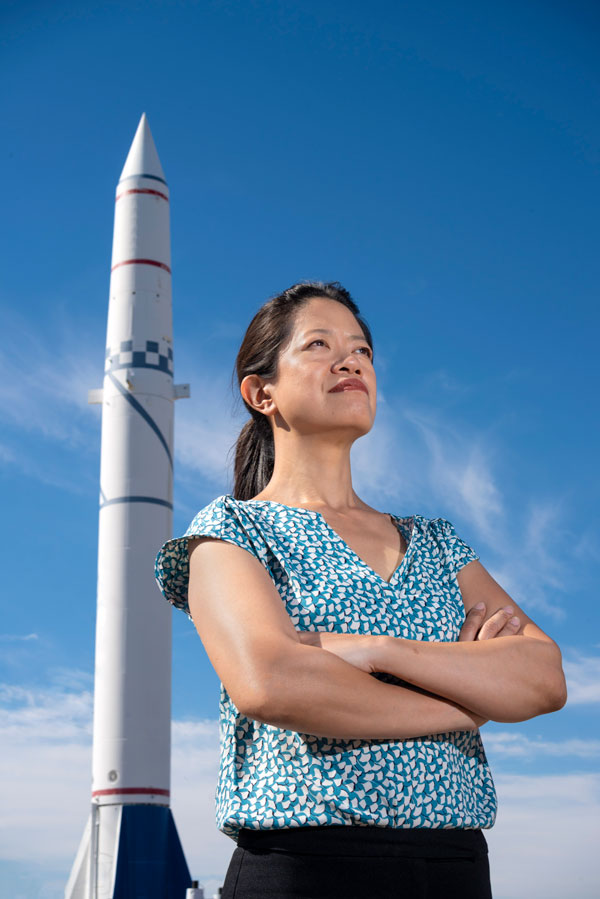
Be grateful you’re not on a dragonfly’s diet. You might be a fruit fly or maybe a mosquito, but it really wouldn’t matter the moment you look back and see four powerful wings pounding through the air after you. You fly for your life, weaving evasively, but the dragonfly somehow tracks you with seemingly instant reflexes. For a moment, you think you’ve gotten away, just as it closes in swiftly from below for the kill.
Then, as the dinosaur-era predator claws into you with spiny legs and drags you into its jaws midair, you might wonder to yourself, “How did it catch me with such a tiny brain and no depth perception?”
Sandia is homing in on the answer with research showing how dragonfly brains might be wired to be extremely efficient at calculating complex trajectories.
In recent computer simulations, faux dragonflies in a simplified virtual environment successfully caught their prey using computer algorithms designed to mimic the way a dragonfly processes visual information while hunting. The positive test results show the programming is fundamentally a sound model.
The Sandia research is examining whether dragonfly-inspired computing could improve missile defense systems, which have the similar task of intercepting an object in flight, by making on-board computers smaller without sacrificing speed or accuracy. Dragonflies catch 95% of their prey, crowning them one of the top predators in the world.
Computational neuroscientist Frances Chance, who developed the algorithms, presented her research earlier this month at the annual meeting of the Organization for Cognitive Neurosciences in Barcelona, Spain. She will also present at the International Conference on Neuromorphic Systems, July 23–25, in Knoxville, Tennessee.
Research replicates dragonfly’s highly efficient brain
Frances specializes in replicating biological neural networks — brains, basically — which require less energy and are better at learning and adapting than computers. Her studies focus on neurons, which are cells that send information through the nervous system.
“I try to predict how neurons are wired in the brain and understand what kinds of computations those neurons are doing, based on what we know about the behavior of the animal or what we know about the neural responses,” she said.
For example, a dragonfly’s reaction time to a maneuvering prey is a mere 50 milliseconds. A human blink takes about 300 milliseconds. Fifty milliseconds is only enough time for information to cross about three neurons. In other words, to keep up with a dragonfly, an artificial neural network needs to be done processing information after only three steps — though, because brains fire lots of signals at once, each step may involve many calculations running at the same time.
Faster, lighter computing for missile defense and AI
Missile defense systems rely on established intercept techniques that are, relatively speaking, computation-heavy. But rethinking those strategies using highly efficient dragonflies as a model could potentially:
Shrink the size, weight and power needs of onboard computers. This would allow interceptors to be smaller and lighter, and therefore more maneuverable.
Reveal new ways to intercept maneuvering targets, such as hypersonic weapons which follow less-predictable trajectories than ballistic missiles.
Reveal new ways to home in on a target with less sophisticated sensors than are currently used.
Dragonflies and missiles move at vastly different speeds, so it’s unknown how well this research will ultimately translate to missile defense. But developing a computational model of a dragonfly brain also could have long-term benefits for machine learning and artificial intelligence.
AI is used throughout wide-ranging industries, from self-driving transportation to prescription drug development. These fields stand to gain from highly efficient methods for constructing fast solutions to complex problems. Ongoing research at Sandia is refining Frances’ algorithms and determining where they’re most applicable.
Her research is funded by Sandia’s Laboratory Directed Research and Development program.